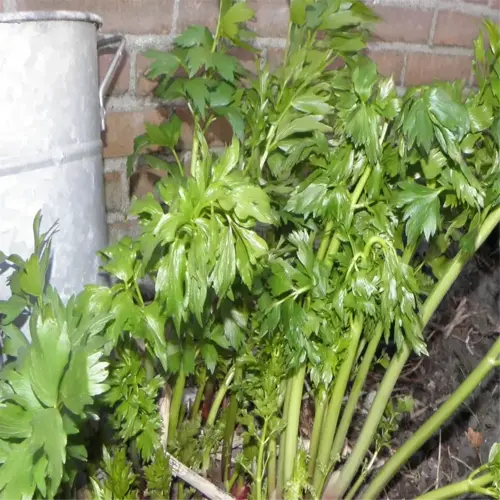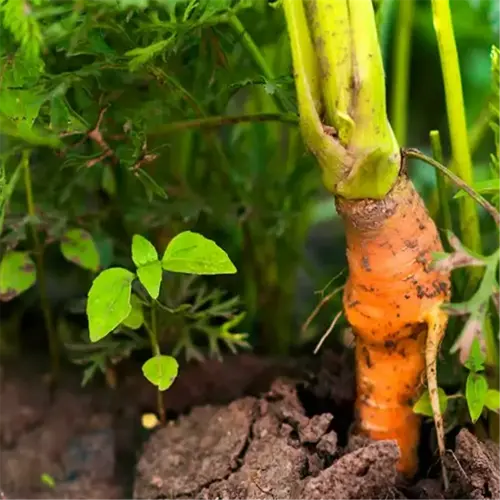How to Grow Cherry Trees From Seed or Sapling

Written by
Michael Sullivan
Reviewed by
Prof. Martin Thorne, Ph.D.Growing cherry trees can be done by stratifying seeds for 10 weeks , or you may plant grafted saplings as another option.
Be sure to test the soil pH (6.0-7.0) and then amend it with compost to ensure the best root health.
Pruning your trees in late winter will help create fruiting wood and control diseases.
For birds, netting is a good option, plus you might consider planting early ripening mulberry trees to distract them.
When harvesting cherries, do so while the fruit is still firm and place them in a breathable container without washing them.
You may have heard some stories about cherries; seedlings can take 4 to 7 years to produce fruit; self-fertile varieties do not require another pollenizer.
Article Navigation
Understanding how to grow cherry trees means more than harvesting cherries, it is a process that combines patience with produce.If you choose to plant cherry trees with seeds or saplings, you will learn to endure.I've upped the ante on both seeds and saplings, using the former and finding out they are not as good for beginners if you expect a harvest sooner, since the Seeds require a ten-week cold treatment first in the freezer to simulate winter before they will sprout in Summer and, I think, in a way challenges your resolve.
Select seeds if you want to save money and don't mind the slow process of life. Saplings remove the wait and may start fruiting in 3-5 years I can say a grafted sapling for me bore fruit in year 4 while seeds don't usually fruit before year 7. Having realistic expectations is key. Trees will grow well in zones 4-7, as long as the site has sun and well-draining soil. I would suggest taking photos to track growth progress because it can help when we go through those long stretches where they feel like they aren't growing or changing.
Step-by-Step Planting Guide
Have seeds you want to start? Soak seeds first (for about 10 minutes) and refrigerate, with damp vermiculite around them, to simulate winter for 10 weeks. I learned this helps simulate natural cycles. After finishing the cold treatment, plant the seeds 1 inch deep in pots, and separate them at least 3 inches apart to allow enough space for roots to develop. For saplings, diz a planting hole about twice as wide as the size of the rootball, and for dwarf rootstock grafts, position the graft 2 inches above the soil to prevent it from rooting in the soil. If you bury the graft union they could be susceptible to the disease.
Standard rootstock should be set between trees 35-40 feet apart, and dwarf rootstock generally falls in a range of 8-10 feet. A plant spacing that is too crowded interrupts sunlight. I recall planting two saplings close to each other, and their branches intertwined and produced less fruit. Use a tape measurer and have a tape measurer on-site. You should check annual spacing as the root systems expand.
Do not plant deeply. With bare-root young trees, spread the roots over a mound of soil. Gently fill the gaps. Water immediately at the time of planting with 5 gallons (18.9 liters) of water. Apply mulch 3 inches (7.6 cm) around the base of the tree, but do not apply mulch up to the trunk of the tree, as mulch will retain moisture that can cause rot.
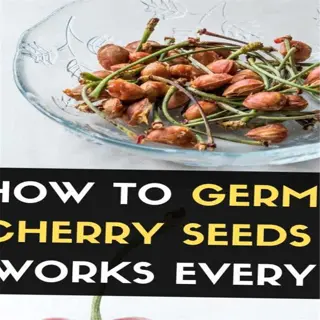
Cherry Seeds Preparation
- Stratification: Mix seeds with moist vermiculite in sealed plastic bag. Store in refrigerator at 34-41°F (1-5°C) for 10 weeks.
- Germination: Plant stratified seeds 1 inch (2.5 cm) deep in potting mix. Keep soil at 68°F (20°C) for 2-3 weeks until sprouts emerge.
- Transplant Timing: Move seedlings outdoors after last frost when temperatures exceed 50°F (10°C).
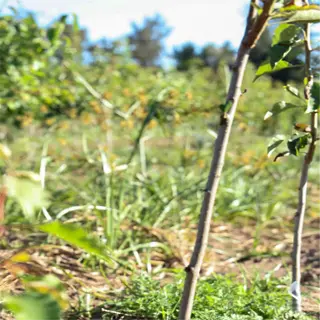
Sapling Rootstock Setup
- Graft Union Rules: Dwarf rootstock requires union 2 inches (5 cm) above soil. Standard rootstock buried 2 inches below.
- Spacing: Sweet cherries need 35-40 ft (10.7-12.2 m). Sour cherries require 20-25 ft (6-7.6 m).
- Watering: Soak rootball 2 hours pre-planting. Water with 5 gallons (18.9 L) post-planting.
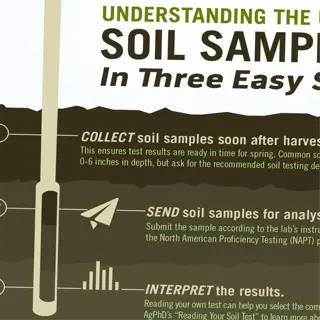
Soil Testing
- pH Adjustment: Add lime if below 6.0 (1 lb/0.45 kg per 100 sq ft/9.3 m²). Add sulfur if above 7.0.
- Drainage Test: Dig 12-inch (30 cm) hole. Fill with water; drainage >2 inches (5 cm)/hr required.
- Nutrient Check: Test for nitrogen (ideal: 20-40 ppm), phosphorus (30-50 ppm), potassium (150-250 ppm).
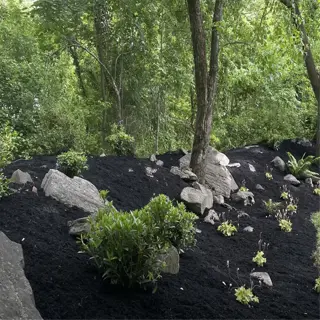
Mulching Techniques
- Material: Use 3-inch (7.6 cm) layer of wood chips or straw. Keep 4 inches (10 cm) from trunk.
- Benefits: Reduces weeds by 85%, retains 30% more soil moisture, regulates root temperature.
- Renewal: Replace mulch annually in early spring before bud break.
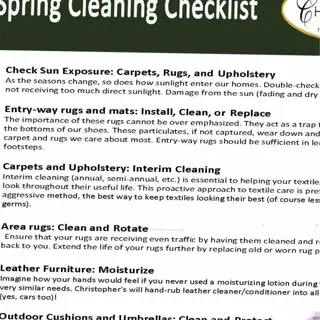
Seasonal Care
- Spring: Apply 5-10-10 fertilizer at 1 lb/0.45 kg per inch (2.5 cm) of trunk diameter.
- Summer: Water with 10-15 gallons (37.9-56.8 L) weekly during drought conditions.
- Fall: Wrap trunks with burlap up to 18 inches (45 cm) height to deter rodents.
Soil Preparation and Planting Basics
Checking soil pH before planting cherries is essential! Aiming for a pH of 6.0-7.0 is a good range, getting a cheap test kit can save you years of growth that has been stalled. My first tree was stunted until I finally added lime to my acidic soil. Heavy clay soils, or heavy sandy soils, should always be mixed in with 30% compost. This helps balance the nutrients and provide some texture.
Root health is determined by drainage. Dig a hole 12 inches (30 cm) deep and fill it with water. If the water does not drain slower than 2 inches (5 cm) per hour, amend the soil with perlite or coarse sand. I generally use a mix of 50% compost and 20% sand in heavy soils. Don't plant in low spots that will hold water.
Use 3 inches (7.6 cm) of wood chips or straw as mulch but leave a 4-inch (10 cm) gap around the trunk. Rodents love tight mulch beds; I lost a sapling to chewing before knowing to do this. Replace mulch each year to suppress weeds without suffocating roots.
Testing and Amendments
- Soil Test: Use a kit to measure pH and NPK levels. Ideal pH: 6.0-7.0.
- Lime Application: Apply 5-10 lbs (2.27-4.54 kg) of dolomitic lime per 100 sq ft (9.3 m²) if pH <6.0.
- Organic Matter: Mix 3-4 inches (7.6-10 cm) of compost into top 12 inches (30 cm) of soil.
Drainage Enhancement
- Raised Beds: Build 8-12-inch (20-30 cm) beds for clay soils.
- Perlite/Gravel: Add 20% by volume to improve aeration.
- Slope Grading: Create a 2% slope to redirect excess water.
Mulching Guidelines
- Material: Use straw, wood chips, or leaf mold.
- Depth: Apply 3-inch (7.6 cm) layer around base.
- Avoid Trunk Contact: Leave 4-inch (10 cm) gap to prevent rot.
Seasonal Maintenance
- Spring: Side-dress with 1 lb (0.45 kg) 10-10-10 fertilizer per tree.
- Fall: Test soil and adjust pH if needed.
- Winter: Cover soil with burlap to prevent erosion.
Site Preparation
- Debris Removal: Clear rocks/weeds in 5-ft (1.5 m) radius around planting area.
- Tilling: Loosen soil to 18-inch (45 cm) depth for root penetration.
- Marking: Flag planting spots 20-25 ft (6-7.6 m) apart for sour cherries.
Essential Care for Healthy Growth
Thorough watering develops resilient roots. For young trees, use 5-7 gallons (19-26 liters) of water, at least twice every week. For larger, more established trees, this may increase to 10-15 gallons (38-57 liters) every 7 to 10 days during dry conditions. I lost one tree to root rot when I mistakenly applied light watering every day. Apply water slowly, at the drip line (where the roots will absorb the majority of water).
Prune during late winter, when the buds are yet to swell in preparation for blossom. When pruning, you first need to remove any dead wood. Then, you want to consider removing some of the crowded branches, allowing more sunlight to reach the fruiting spurs. I learned the hard way: Pruning too close to fall installed frost cracks in the stems. You want to prune with sharp shears and you can sterilize them using rubbing alcohol, to prevent disease.
In early spring it is best to apply 5-10-10 fertilizer. Use 1 cup (128g) for each inch (2.5 cm) of trunk diameter, and place the fertilizer about 12 inches (30 cm) away from the base of the trunk. I had a neighbor who used a mix that was high in nitrogen, which resulted in excellent leafy growth, but no fruit to speak of. Do not fertilize 6 weeks before your first frost.
Combat pests organically. Spray aphids with 1 tsp (5 ml) of dish soap mixed with 1 quart (0.9 L) of water. Hang sticky traps to catch flies. I will wrap trunks in burlap to help deter borers. I will plant marigolds nearby as the scent confuses the moths seeking cherry leaves.
Watering Schedule
- Young Trees: 5-7 gallons (18.9-26.5 L) twice weekly for first 2 years.
- Mature Trees: 10-15 gallons (37.9-56.8 L) weekly during droughts.
- Signs of Stress: Wilting leaves = immediate deep watering.
Pruning Techniques
- Timing: Late winter for shape, summer for light thinning.
- Tools: Sterilize shears with 70% isopropyl alcohol between cuts.
- Method: Cut ¼-inch (0.6 cm) above buds at 45° angle.
Fertilizer Application
- Ratio: Use 5-10-10 NPK formula for balanced growth.
- Amount: 1 lb (0.45 kg) per inch (2.5 cm) of trunk diameter.
- Avoid Late Feeding: Stop fertilizing 6 weeks before frost.
Pest Management
- Aphids: Spray with water + 1 tsp (5 ml) dish soap per quart (0.95 L).
- Borers: Apply sticky traps to trunks in early spring.
- Birds: Use reflective tape on branches during fruiting.
Disease Prevention
- Brown Rot: Remove infected fruit, spray copper fungicide.
- Leaf Spot: Rake fallen leaves, apply neem oil every 14 days.
- Canker: Prune infected branches 6 inches (15 cm) below damage.
Protecting Trees from Birds and Pests
Whenever I need to keep my feathery friends away, I rely on UV-resistant nylon netting. I recommend you place it over the trees two weeks before the fruit even ripens. I prefer meshing with holes in the range of ¾ inch (1.9 cm) gap, because that is small enough to block sparrows, and can be reused for a couple of years. A 10 by 20-foot mesh is less than $40, depending on the retailer. It's much cheaper than having to replace your lost crops.
I recommend starting your pest control efforts before your plants blossom. Aphids are usually found in clusters on the buds in early spring. I apply a slow spray of neem oil diluted with water (2 tbsp per gallon) in the evening. If you miss this activity, prepare yourself to deal with sticky honeydew on the fruit trees during the entire summer.
You could plant distraction crops like mulberries 15-20 feet (4.6-6 meters) from your cherries. Their early fruiting would attract the birds. I interplant multiple distraction crops with sunflowers (the tall stalks confuse the pests as well). Prune your mulberries a little in May for extra fruit until the cherries ripen.
There are different scare devices. Reflective tape ($5/roll) works best when the wind blows. Owl decoys ($20-$50) need to be moved weekly. Ultrasonic units ($80+) cover ¼ acre but don't see threats near them. Using methods in the same area will combine well. Tape on top of netting stops 90% of raids.
Netting Installation
- Material: UV-resistant nylon mesh with ¾-inch (1.9 cm) gaps.
- Timing: Drape netting 2 weeks before fruit ripens.
- Frame Use: PVC pipes or wooden stakes to elevate netting 3 ft (0.9 m) above canopy.
Distraction Crop Strategy
- Plant Selection: Early-ripening mulberries 15-20 ft (4.6-6 m) from cherries.
- Maintenance: Prune mulberries to extend fruiting period through cherry season.
- Avoid Varieties: Skip 'Illinois Everbearing' (late harvest).
Scare Device Setup
- Reflective Tape: Hang 4-6 strips per tree, 6 ft (1.8 m) above ground.
- Owl Decoys: Move weekly to prevent habituation.
- Ultrasonic Units: Place 1 device per ¼ acre (0.1 hectare).
Organic Pest Sprays
- Aphid Spray: 1 tbsp (15 ml) neem oil + 1 tsp (5 ml) dish soap per quart (0.95 L) water.
- Timing: Apply at dawn/dusk to avoid leaf burn.
- Frequency: Weekly during infestation.
Habitat Modification
- Prune Lower Branches: Keep canopy 5 ft (1.5 m) above ground to deter rodents.
- Clean Fallen Fruit: Remove debris daily during harvest.
- Bird Feeders: Place 50+ ft (15 m) away from cherries.
Harvesting and Storing Cherries
When the cherries are dark red with firm flesh and stems still attached, it is time to harvest. A Brix meter can also be used here to measure the sugar level; aim for 16-20% bricks for best quality cherries. The acid cherry will soften a little at peak ripeness, so a good indicator of ripeness would be to pick one or two cherries a day starting a week earlier than the anticipated harvest. Ripe cherries break off or will detach easily with a gentle twist.
Store unwashed cherries in vented plastic or paper-lined containers in the refrigerator at 32-34°F (0-1°C). They will remain good for 7-10 days. If you want to freeze cherries, spread pitted cherries on a tray and freeze them. Once they're frozen, you can put them in bags. You can keep frozen cherries for 12 months, but they may lose their crispness. You can defrost them in the fridge overnight.
Leave on the stems until using them because they slow down moisture loss. Once, I snipped off stems, and the cherries shriveled up within a few days. Scissors help if you find yourself having to cut off fruit spurs, which can happen if you tear off stems. Only wash what you will consume right after that. Removing stems and washing fruit will often invite mold, and the fruit turns to mush overnight in the fridge.
Steering clear of freezing whole cherries with pits is a good idea because they taste bitter when thawed. Preservation is easy when half-stemmed cherries are mixed with a syrup of 1:1 sugar. Canning requires that the jars be cooled, sterilized, a track of the minutes of processing, and any adjustments made accordingly. My initial but failed batch was the lesson to document processing minutes for the jars. Place jars in a cool, dark place.
Harvest Timing
- Sweet Cherries: Pick when dark red/black and firm. Sugar content >16 Brix.
- Sour Cherries: Harvest when bright red and slightly soft.
- Morning Pick: Collect before 10 AM to retain crispness.
Refrigeration Steps
- Container: Use vented plastic or paper-lined baskets.
- Temperature: Keep at 32-34°F (0-1°C) with 90-95% humidity.
- Don't Stack: Limit to 3 layers to avoid bruising.
Freezing Techniques
- Dry Freeze: Pit cherries, spread on parchment-lined tray for 4 hrs, then bag.
- Syrup Pack: Submerge in 40% sugar syrup for plumper texture.
- Thawing: Defrost in fridge for 12 hrs to prevent mushiness.
Canning Process
- Sterilization: Boil jars 10 mins, lids 5 mins.
- Syrup Ratio: 2 cups (473 ml) water + 2 cups (400g) sugar per quart (0.95 L).
- Processing Time: 15 mins in boiling water bath.
Drying Best Practices
- Pre-Treatment: Dip in lemon juice (1 cup/237 ml per gallon/3.78 L water).
- Texture Check: Bendable but not sticky = properly dried.
- Storage: Use oxygen absorbers in airtight jars.
5 Common Myths
Cherry trees will allow you to see fruit in the first year after planting.
For most cherry trees (when grown from seeds) it could take 4-7 years and for new grafted saplings it may take 3-5 years before getting fruit. The claims made for rapid fruiting do not consider the requirements of root establishment and seasonal dormancy that is necessary for sustainable and healthy recursive practice with fruit-bearing trees.
You need to water cherry trees every day for optimal growth.
Overwatering causes root rot. Established cherry trees thrive with deep watering every 7-10 days (10-15 gallons/37.9-56.8 L per session). Adjust frequency based on soil type: sandy soils need more frequent watering than clay.
To prepare for the spring growth of cherry trees, pruning in the fall is best.
Pruning cherry trees in fall can encourage some diseases and possible frost damage. They are best pruned during late winter when the trees are fully dormant and the buds have not yet swollen. Pruning during this time minimizes sap loss and allows the tree to heal before spring pests emerge.
Seeds from grocery-store cherries give you trees that will produce exactly identical fruit.
Commercial cherries are actually hybrids, and seeds usually don't produce fruit of the same quality. For consistency in harvests, use nursery grown young trees propagated onto a rootstock unaffected by soil borne diseases. Trees grown from seed usually will not produce quality fruit or fruit that is edible.
Cherry trees can't produce fruit unless planted in pairs.
Self-fertile varieties like 'Stella' and 'Lapins' yield fruit solo. However, planting cross-pollinators (e.g., 'Bing' with 'Rainier') increases yields by 30-60% for non-self-fertile types. Always verify pollination needs by cultivar.
Conclusion
Patience is the defining characteristic of cherry growing. It will take around 4-10 years for the trees to fruit, depending on whether you started with seeds or saplings. I kept a journal of the tree's milestones (such as bloom date, disease, and pest battles, and how much it grew in height each year). The photos and notes I took helped me adjust how I cared for the tree at times when growth stalled. I encourage you to track your trees' journal to stay motivated and inspired during the quiet seasons.
Saplings are an expense up front, but they come with a faster reward. My neighbor waited seven years for cherries, from seeds. I harvested cherries in four years, from a grafted sapling. If considering costs and time, seeds will derive time. Seeds provide lessons in resilience, while saplings offer up easier victories. Choose based on personal goals and budget.
Combine cherries with either garlic or marigold to disturb insects naturally. Starting with healthy soil with a pH between 6.0 and 7.0 is a great foundation. Refresh mulch every year. Share your experience with local gardening groups. They might save you years of trouble. Each season brings a new learning experience.
External Sources
Frequently Asked Questions
How to grow cherry trees successfully?
To grow cherry trees, stratify seeds for 10 weeks or plant saplings in well-draining soil with pH 6.0-7.0. Ensure full sun, prune annually in late winter, and protect from birds with netting. Water deeply but infrequently to avoid root rot.
Do cherry trees require a pollinator?
Self-fertile cherry varieties like 'Stella' don't need pollinators. For others, plant cross-pollinating pairs (e.g., 'Bing' and 'Rainier') within 50 feet. Bees transfer pollen between flowers, increasing yields by up to 60% for non-self-fertile types.
What soil is best for cherry trees?
Cherries thrive in slightly acidic to neutral soil (pH 6.0-7.0). Mix sandy soils with compost for nutrients or add gypsum to heavy clay. Test soil annually and amend with lime if too acidic or sulfur if too alkaline.
When should I prune my cherry tree?
Prune in late winter when trees are dormant but before spring buds form. Remove dead branches and thin crowded areas to improve air circulation. Avoid fall pruning to prevent disease entry points from frost damage.
How often should I water cherry trees?
Water young trees twice weekly with 5-7 gallons. Mature trees need deep watering every 7-10 days during dry spells. Overwatering causes root rot, while underwatering leads to cracked fruit. Adjust based on soil type and rainfall.
What pests attack cherry trees?
Common pests include:
- Birds (use UV-resistant netting)
- Aphids (spray with soapy water)
- Peach tree borers (apply sticky traps)
- Cherry fruit flies (hang pheromone traps)
Can I grow cherry trees in containers?
Yes, dwarf varieties like 'Stella' grow well in 25-gallon pots. Use well-draining soil, fertilize monthly with low-nitrogen blends, and ensure 6+ hours of sun. Repot every 3-4 years to refresh soil and trim roots.
Why isn't my cherry tree producing fruit?
Possible reasons include:
- Immaturity (trees fruit in 4-10 years)
- Poor pollination (plant companions or self-fertile varieties)
- Over-pruning (remove <25% of branches annually)
- Nutrient imbalance (test soil and adjust fertilizer)
What's the lifespan of a cherry tree?
Standard cherry trees live 20-40 years, while dwarfs last 15-25 years. Proper care (pruning, pest control, soil health) extends lifespan. Black cherry varieties can survive 80+ years in ideal conditions.
What should I avoid planting near cherry trees?
Avoid walnut trees (juglone toxicity), tomatoes/potatoes (shared pests), and large shade trees. Ideal companions include garlic (deters borers), marigolds (repel nematodes), and chives (improve pollination).
